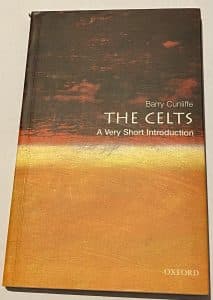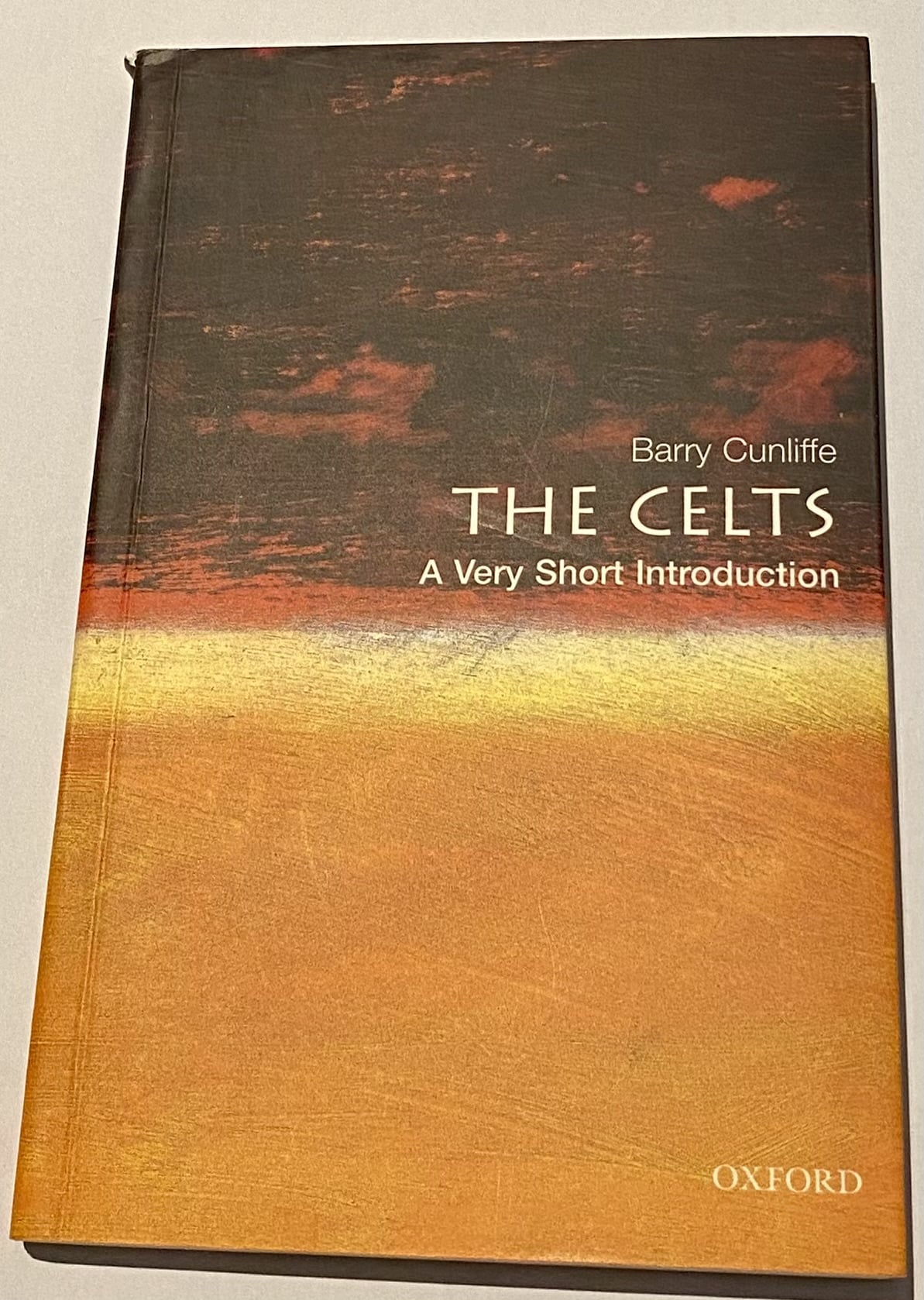Some historians are born academics, their work is thorough, detailed, and completely incomprehensible. But there are a rare few, of whom we will have all heard of (e.g. Tom Holland, Anthony Beevor), who manage to bridge that great divide, turning facts into narrative, bringing history to life through a colourful string of characters. Barry Cunliffe’s book on The Celts is somewhere in between: neither a dry academic tome, nor mainstream bestselling historical narrative. It is a concise, yet detailed, overview of academic research, with a clear application to our contemporary culture and interpretations.
This raises the question of why review it. If it’s neither purely academic nor a bestseller, what makes it stand out? I have three reasons:
- The Celts as a topic requires both the vigorous academic approach with an accessible narrative as most other books on the subject tend to either extreme. This is a rare exception and a noteworthy one.
- Debunking mainstream myths is a sensitive subject particularly when it concerns Celtic identity, but Cunliffe does so with care and precision.
- Concision is a rare gift in a book and Cunliffe delivers it with the craft of a well-practiced writer.
Book Overview
Celticness is a term frequently used yet rarely defined. Art, language, land, history, and people themselves, are all badged or brandished (depending on the perspective) with the label. Who or what constitutes the ‘celtic people’ has been a subject of a lively debate for centuries. But when seeking to understand and analyse the term and its meaning, this ambiguity presents a serious challenge.
Cunliffe’s book begins with a clever introduction setting out the wide range of interpretations of the word ‘Celt’ and how it conjures up an almost meaningless list of flawed impressions. He explains how these are often based on socio-cultural distortions developed throughout the past and present (of which I am guilty too). This is an interesting and provocative challenge setting the scene for the rest of the book.
In search of the Celts
To claim celtic identity is a powerful and evocative subject stretching back millennia. Perspectives on the subject have evolved over time and place, conjuring up all manner of bizarre and conflicting imagery. But Cunliffe takes an entirely different approach.
In many ways this book is something of a literature review; taking all the sources we have on the subject and providing a panoramic analysis. It brings together the economic and political histories with the archaeological and archival records. Myths are alluded to, but always set in their context. In this way, Cunliffe provides us with a thorough and refreshing overview.

Book Structure
The book focuses on four broad categories of evidence when considering the Celts. These are:
- Classical sources
- Archaeological evidence
- Language
- Vernacular traditions
Each of these categories are covered in surprising detail given the brevity of each section. Tackling each category in turn, Cunliffe provides the reader with a clear summary of what the evidence shows. For instance, Cunliffe argues that “the Classical sources…gave the impression that Celts were everywhere in barbarian Europe”. Whereas the linguistic evidence points to Western-Europe as the centre for this people group.
The final section of the book explores the contemporary debate surrounding Celtic identity. He notes how it is the subject of constant reinvention for political, cultural, and social reasons which have changed themselves over time.
Verdict
If you are looking for a semi-academic overview of the Celtic people to understand who or what they were, this is a fantastic starting point. It’s concise, clear, and extremely well researched (as you’d expect). For me, I made the mistake – one that Cunliffe’s clearly calls out – of hoping to discover what history tells us about the Irish Celts.
Cunliffe does make many allusions to such a people, but these are so heavily caveated and qualified I am left feeling a little deflated. He takes a forensic look at what we can know about a people termed the Celts, but he makes it clear that there are many local particularities between regions that make generalisations difficult, if not problematic. And I think that’s the point and indeed a good one to take on board. For the Celtic identity has been subject to such manipulation and political distortion, we are often left with a bad taste in our mouths. Cunliffe’s analysis goes a long way to address this and it will certainly inform my wider writing.
This book was a helpful corrective and cautionary note for anyone interested in the Celts. Identity matters and any attempt to portray it should take care to respect these sensitives. Fiction is fiction, but we would do well to note the power fiction holds in shaping ‘fact’.
Author
Cunliffe is one of the most acclaimed scholars on the Celts and ancient history more generally. This is particularly clear when reading other academic work, all of which appears to take Cunliffe’s scholarship as their starting point; his research acts as the reference point from which others depart. You can see a full history of his achievements and credentials here.
Favourite quote
“So from New Age body decoration to concerns for the survival of regional identity, from half-baked attempts at political manipulation to an inspiration for new music, the Celtic spectre hovers while the Celtic spectre is held aloft. Celticness does indeed seem to be all things to all men.”
Favourite fact
The term Celt derives from the Greek Keltoi which was a generic term used to refer to “disparate northern barbarians they encountered” and was most likely just a loosely employed term – much like ‘American’ today.
Book specification
145 Pages, 16 chapters, published in 2003.
Available here on: Amazon £7.99 but also plenty of second-hand versions from £3+
For more of my posts please see here or to follow me on Twitter see here
